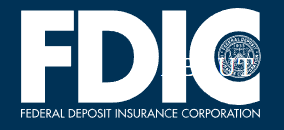The Federal Deposit Insurance Corporation (FDIC) has transferred all deposits—both insured and uninsured—and substantially all assets of the former Silicon Valley Bank of Santa Clara, to a newly created, full-service FDIC-operated ‘bridge bank’ in an action designed to protect all depositors of Silicon Valley Bank.
Depositors will have full access to their money, when Silicon Valley Bridge Bank, N.A., the bridge bank, opened and resumed Monday normal banking hours and activities, including online banking. Depositors and borrowers will automatically become customers of Silicon Valley Bridge Bank, N.A. and will have customer service and access to their funds by ATM, debit cards, and writing checks in the same manner as before. Silicon Valley Bank’s official checks will continue to clear. Loan customers should continue making loan payments as usual.
Silicon Valley Bank was closed by the California Department of Financial Protection and Innovation on Friday, March 10, 2023, and the FDIC was appointed receiver.
The FDIC named Tim Mayopoulos as CEO of Silicon Valley Bridge Bank, N.A. Mr. Mayopoulos is former president and CEO of the Federal National Mortgage Association and most recently served as president of Blend Labs, Inc.
The transfer of all the deposits was completed under the systemic risk exception approved Sunday. All depositors of the institution will be made whole. No losses associated with the resolution of Silicon Valley Bank will be borne by taxpayers. Shareholders and certain unsecured debt holders will not be protected. Senior management has also been removed. Any losses to the Deposit Insurance Fund to support uninsured depositors will be recovered by a special assessment on banks, as required by law.
The receiver for Silicon Valley Bank has also transferred all Qualified Financial Contracts (as defined in 12 USC 1821(e)) of the failed bank to the bridge bank.
These actions will protect depositors and preserve the value of the assets and operations of Silicon Valley Bank, which may improve recoveries for creditors and the DIF.
A bridge bank is a chartered national bank that operates under a board appointed by the FDIC. It assumes the deposits and certain other liabilities and purchases certain assets of a failed bank. The bridge bank structure is designed to “bridge” the gap between the failure of a bank and the time when the FDIC can stabilize the institution and implement an orderly resolution.


